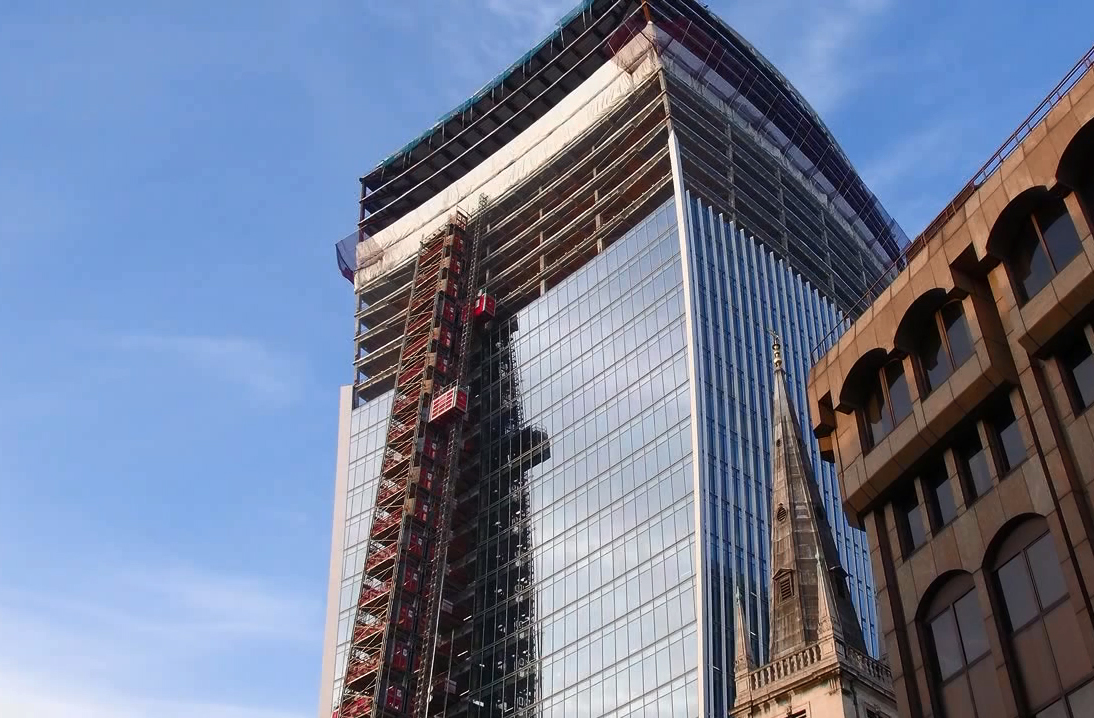London's Burning: How a Skyscraper Melts Cars

London isn't famous for hot weather, but that may change soon, and not because of global warming: The design of a new skyscraper in the city is melting cars and setting buildings on fire.
"It's absolutely ruined," Martin Lindsay told the BBC, referring to his Jaguar XJ. Lindsay had the misfortune of parking his luxury car across the street from the office building for an hour; the Jaguar now has melted panels, mirrors and other parts. "You can't believe something like this would happen. They've got to do something about it."
[Photos: The World's Tallest Buildings]
Local shopkeepers have complained about carpets catching fire and smoldering front doors. A restaurant owner told London news site City A.M. that slate tiles on his doorstep had shattered in the heat.
[Spooky! Top 10 Unexplained Phenomena]
The building — designed by internationally renowned architect Rafael Viñoly — is a dramatic edifice with curved exterior walls. Built at 20 Fenchurch Street in London's financial center, the 38-story skyscraper is known locally as "the Walkie-Talkie" for its unusual shape.
But that curvilinear shape is exactly what's causing the problem: The south-facing exterior wall is covered in reflective glass, and because it's concave, it focuses the sun's rays onto a small area, not unlike the way a magnifying glass directs sunbeams onto a superhot pinpoint of light.
Sign up for the Live Science daily newsletter now
Get the world’s most fascinating discoveries delivered straight to your inbox.
James Keaveney of the University of Durham's Atomic and Molecular Physics department told City A.M. that the inward curve of the wall is an inherent flaw in the building's design. "It's a concave shape, so it's going to have a focusing effect on the light that is reflected from it."
That same concave shape has been used in the design of solar power plants. A solar dish in New Mexico contains 82 mirrors that focus sunlight onto an engine that contains hydrogen. As the gas expands and contracts from heating and cooling, that motion drives pistons that power a generator that creates electricity.
"There's [also] a power station in Spain that works on this principle," Keaveney said. "They have an array of mirrors that focuses light into a central pillar — if it's 60 degrees Celsius [140 degrees Fahrenheit], you could get solar panels and get some energy out of it."
This isn't the first time Viñoly's architecture has raised eyebrows as well as temperatures: His Vdara Hotel in Las Vegas has been criticized for directing sunbeams onto the swimming pool deck that are hot enough to melt plastic and singe people's hair. The hotspot became known as the "Vdara death ray."
The Vdara mitigated the "death ray" with larger sun umbrellas, but fixing the problem in London might take a lot more work. "There are examples in the past where an architect has had to rebuild the façade," Philip Oldfield, an expert in tall buildings at the University of Nottingham's Department of Architecture, told City A.M. "If this is serious, then I dread to think how expensive it will be."
Follow Marc Lallanilla on Twitter and Google+. Follow us @livescience, Facebook & Google+. Original article on LiveScience.










